Multi-stage sampler multi-sampler, aluminium
Aluminium sampler for sample collection from multiple target locations
- Taking multiple target point samples from different layers
- Enables targeted analysis or representative composite sample
- Versatile use, for a wide range of bulk materials
- Robust and durable thanks to high-quality workmanship
- Lightweight and inexpensive
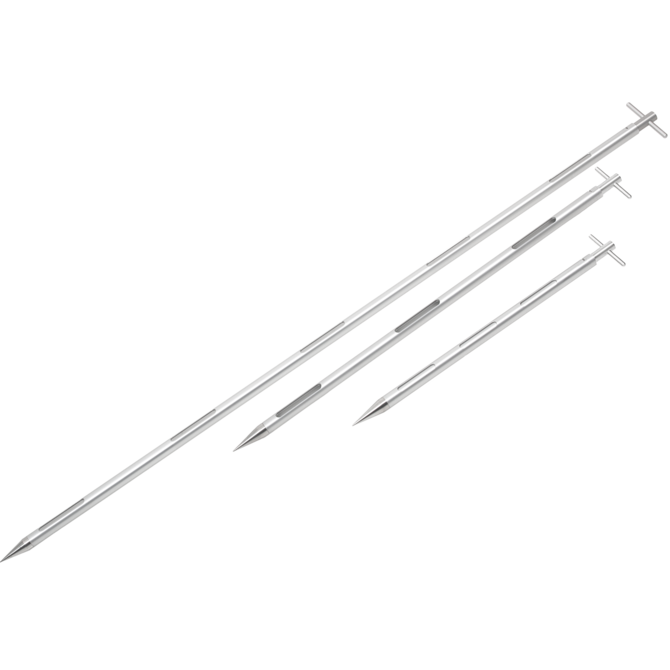


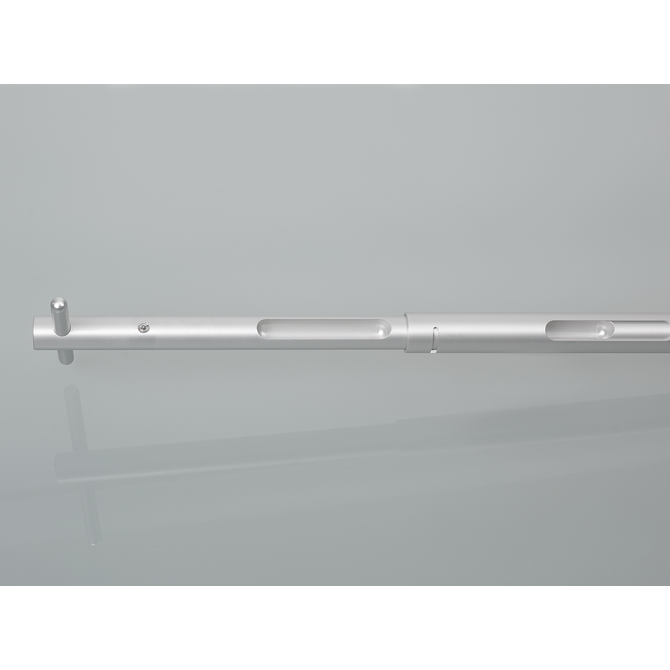
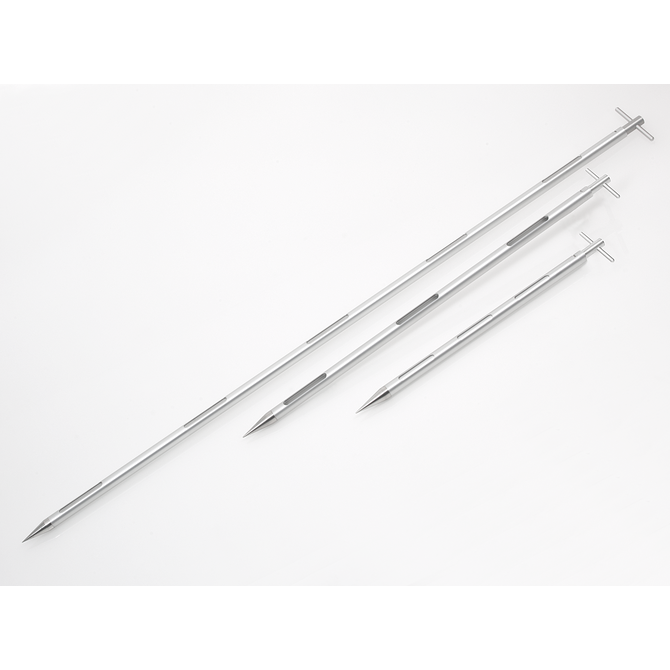

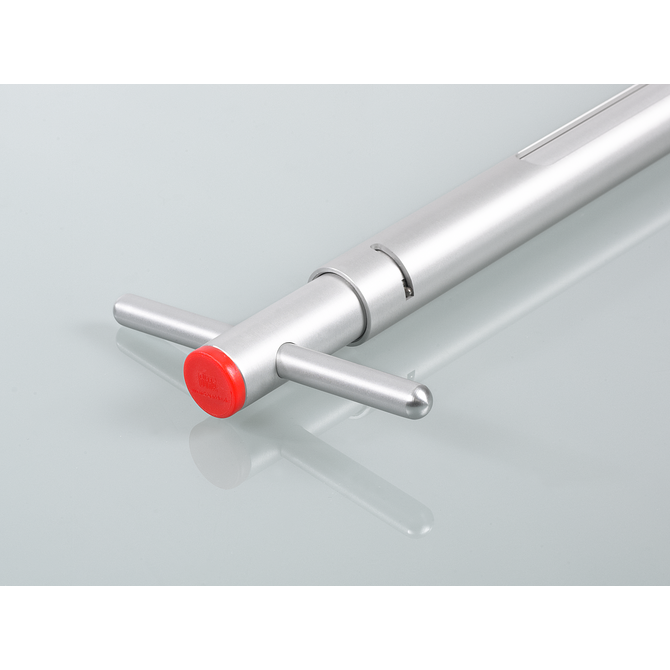

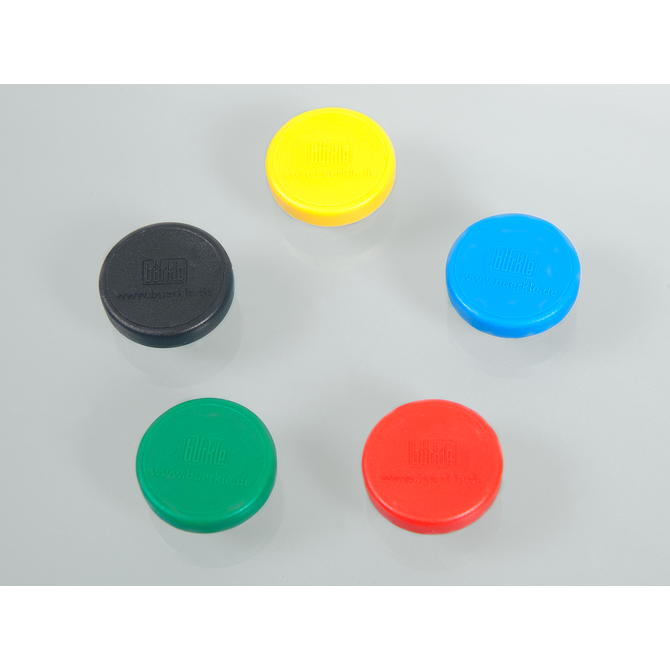





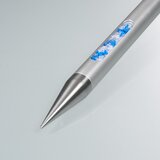



Packaging unit
Piece
Detailed information
The aluminium multi-sampler is significantly lighter than the stainless steel version, making the zone sampler easier to handle and transport, especially when used in field studies or in situations where weight is an issue.
The sampler is easily autoclaved and flamed, minimising the risk of sample contamination.
The sampler is very robust and offers the highest quality workmanship at an attractive price. This makes the aluminium all-layer zone sampler an economical option for budget sensitive projects or for use in less aggressive environments.
The multi-sampler with separate sampling chambers is a dedicated sampler for simultaneous sampling of multiple target points from different zones or layers of a wide variety of bulk solids.
The zone sampler allows differentiated and representative sampling from different depths or areas within a bag, drum, silo, big bag or heap. The multi-zone sampler is particularly useful in situations where the composition of the material varies with depth or across the surface and a single sample is not sufficient to accurately characterise the entire material.
The target point samples can be analysed individually after collection to investigate variability within a material or between different layers of material, or they can be subsequently mixed to produce a composite sample that is representative of the entire material. This method ensures that the final sample is representative, i.e. reflects the average composition of the material, which is essential for correct analysis and quality control.
The lances can be used both vertically and horizontally, making the sampler a very versatile sampler for different containers.
The design with minimal gap between the inner and outer tube reduces the risk of contamination and increases the accuracy of sampling. The removable tip also facilitates cleaning to effectively prevent cross-contamination between different samples.
Colour-coded caps facilitate identification and prevent confusion when using multiple samplers for different bulk solids.
The robust design of the multi-sampler ensures a long service life, even with regular use. The high quality workmanship ensures reliability and precision with every sample taken.
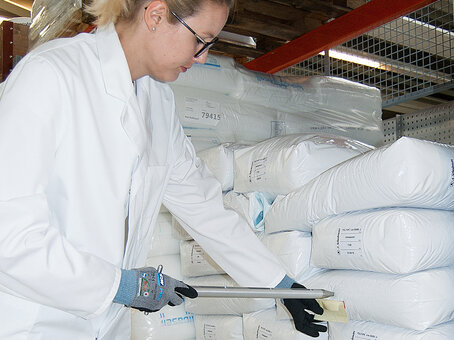

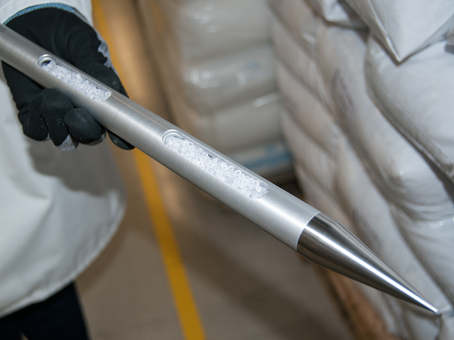
Typical application area of the product
The multi-sampler is used where it is necessary to take samples from several zones or layers simultaneously in order to obtain a comprehensive analysis of the composition, quality, impurities or inconsistencies of a material. For example, in the food industry to check the homogeneity and quality of bulk materials such as grain, corn, nuts, powders or granules; in the pharmaceutical industry for quality control of raw materials, intermediate and finished products; in the chemical industry to analyse chemicals, powders to ensure homogeneity of mixture and compliance with specifications; in the construction industry, materials science, research and development to test bulk materials such as sand, gravel and other materials.
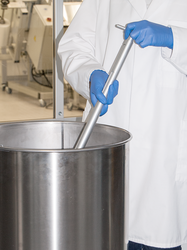
How to use the product
- Turn the handle of the multi-collector clockwise, the multi-collector is now closed and can be pierced into the powder/granulate.
- At the desired depth, turn the handle of the collector counter-clockwise.
- This opens the collection chambers and fills them with sample.
- Turn the handle clockwise to close the collector and remove it from the powder/granulate.
- Open the multi-collector and empty the sample onto a suitable surface or use an emptying device (see accessories).

- Multi-stage sampler multi-sampler, aluminium
- Colour coding caps
Specifications
General material
Al
Aluminium
Further materials
1.4404 (316L)
Stainless steel 1.4404, AISI 316L
Further materials
NBR
Nitrile butadiene rubber
Lance dimensions
- Pipe Ø:
- 25 mm
- Outer Ø:
- 25 mm
- Plunge depth:
- 430 mm
- Total length:
- 583 mm
Sample chamber details
- Sample volume per chamber:
- 14 ml
- Number of collection openings:
- 3 itms
- Sample quantity:
- 42 ml
Collecting chamber dimensions
- Chamber length:
- 80 mm
- Start of the collecting chamber:
- 98 mm
- Chamber width:
- 12 mm
- Distance between the chambers:
- 56.5 mm
Sampling lances
- Special properties Sample lances:
- Removable tip,incl. colour coding,low weight
Complementary products


Closure seal close-it food & pharma 95x95
In response to many requests from our customers, we have developed close-it food & pharma, a closure seal with an adhesive approved for foodstuffs. The adhesive strength of the adhesive is almost the same as the original, the tried and tested close-it from Bürkle. close-it food & pharma also prevents bulk goods from trickling out after sampling.
The adhesive complies with European food directives. Like the original, close-it food & pharma has an aluminium foil barrier layer. This makes close-it food & pharma suitable for sampling foodstuffs, pharmaceuticals, cosmetics, food supplements, even frozen goods - in short, anywhere where special purity is required.


Cleaning brushes


Quali-Paper for zone collectors

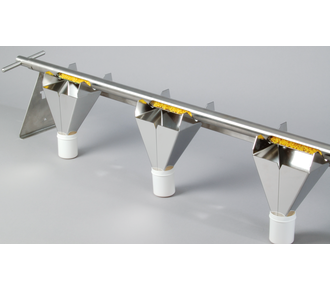
Emptying device

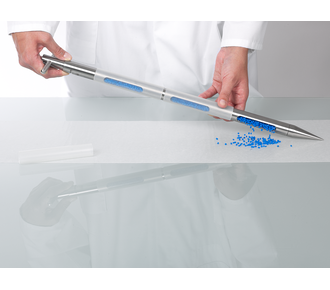
Sealing sleeves for zone samplers


Control seal close-it 95x95
Taking samples from sacks, boxes, bags, etc. with sampling lances is a common and time-proven practice. This produces holes through which easily flowing bulk goods could escape from the container. With the close-it seal, this can be prevented in an uncomplicated manner.
close-it has been especially developed for this purpose. The label has a sandwich-type structure (aluminium/paper) and seals the container hermetically (vapour barrier). This virtually prevents hygroscopic powders from clumping together.
The labels are available in different colours. With printing in red, blue, green, yellow, black or neutral (without printing in white).
close-it can be written on with ball-point pen, pencil or felt-tip marker.
The rear of the label is coated with a powerful adhesive. This means that close-it sticks firmly to most commercial containers, even to surfaces coated with fine powder, slightly moist or even frozen surfaces where conventional labels or adhesive tape will not stick.


Control seal close-it maxi 150x150
Taking samples from sacks, boxes, bags, etc. with sampling lances is a common and time-proven practice. This produces holes through which easily flowing bulk goods could escape from the container. With the close-it seal, this can be prevented in an uncomplicated manner.
close-it has been especially developed for this purpose. The label has a sandwich-type structure (aluminium/paper) and seals the container hermetically (vapour barrier). This virtually prevents hygroscopic powders from clumping together.
The labels are available in different colours. With printing in red, blue, green, yellow, black or neutral (without printing in white).
close-it can be written on with ball-point pen, pencil or felt-tip marker.
The rear of the label is coated with a powerful adhesive. This means that close-it sticks firmly to most commercial containers, even to surfaces coated with fine powder, slightly moist or even frozen surfaces where conventional labels or adhesive tape will not stick.


Closure seal close-it food & pharma Maxi 150x150
In response to many requests from our customers, we have developed close-it food & pharma, a closure seal with an adhesive approved for foodstuffs. The adhesive strength of the adhesive is almost the same as the original, the tried and tested close-it from Bürkle. close-it food & pharma also prevents bulk goods from trickling out after sampling.
The adhesive complies with European food directives. Like the original, close-it food & pharma has an aluminium foil barrier layer. This makes close-it food & pharma suitable for sampling foodstuffs, pharmaceuticals, cosmetics, food supplements, even frozen goods - in short, anywhere where special purity is required.
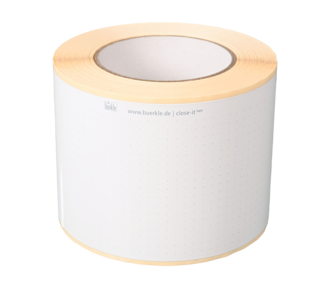

close-it tape Special adhesive tape
Besides the individually detachable close-it and close-it food & pharma closure labels, our repeatedly tested and proven control seal is now also available on a continuous roller. This helps you discover whether you require only a small piece, for example for closing a small hole, or for marking a specific point. Or whether you want to repair a long crack or a large hole quickly, reliably and easily. With its extremely strong adhesive strength, close-it tape holds on the most diverse bases, where the glue effect of normal adhesive tape quickly reaches its maximum capacity.
For universal use, we have kept the adhesive tape close-it tape in white with tear-off lines. It can be labelled with permanent ink and locks gas-proof. Available in the classic close-it design, as well as close-it tape food & pharma, with a food-compatible adhesive.


close-it tape food & pharma
Besides the individually detachable close-it and close-it food & pharma closure labels, our repeatedly tested and proven control seal is now also available on a continuous roller. This helps you discover whether you require only a small piece, for example for closing a small hole, or for marking a specific point. Or whether you want to repair a long crack or a large hole quickly, reliably and easily. With its extremely strong adhesive strength, close-it tape holds on the most diverse bases, where the glue effect of normal adhesive tape quickly reaches its maximum capacity.
For universal use, we have kept the adhesive tape close-it tape in white with tear-off lines. It can be labelled with permanent ink and locks gas-proof. Available in the classic close-it design, as well as close-it tape food & pharma, with a food-compatible adhesive.
Similar products
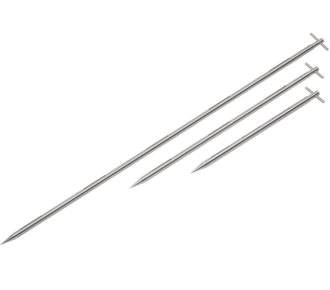
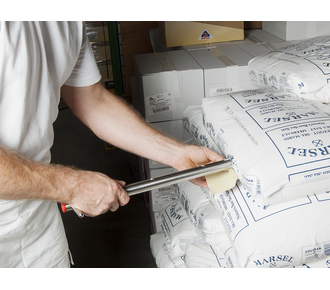
Multi-stage sampler multi-sampler 316L (1.4404)

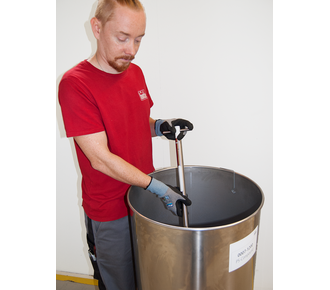

 Deutsch
Deutsch
 français
français
 español
español
 русский
русский
 italiano
italiano
 日本語
日本語
 polski
polski
 português
português
 Türkçe
Türkçe
 中文
中文




























































